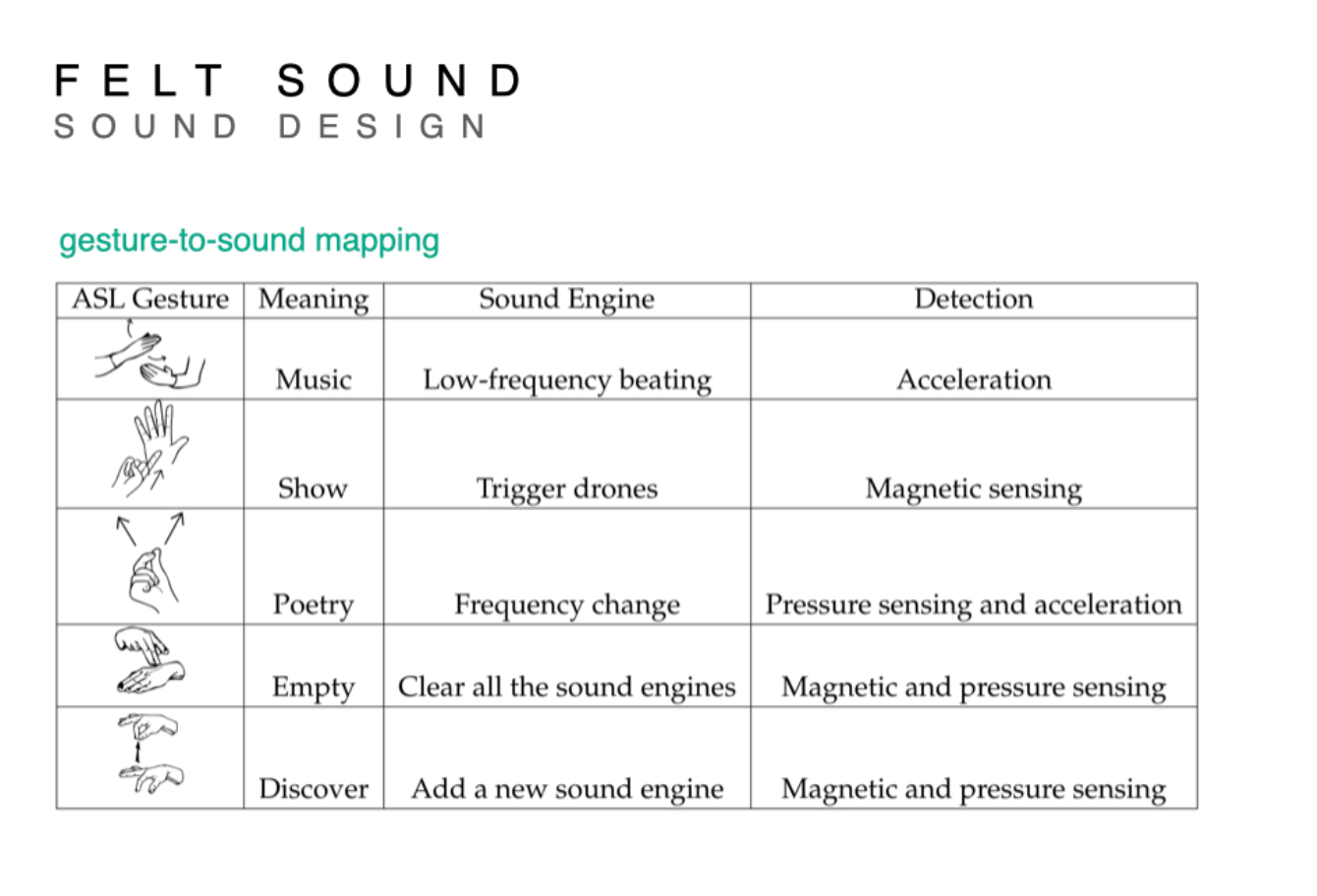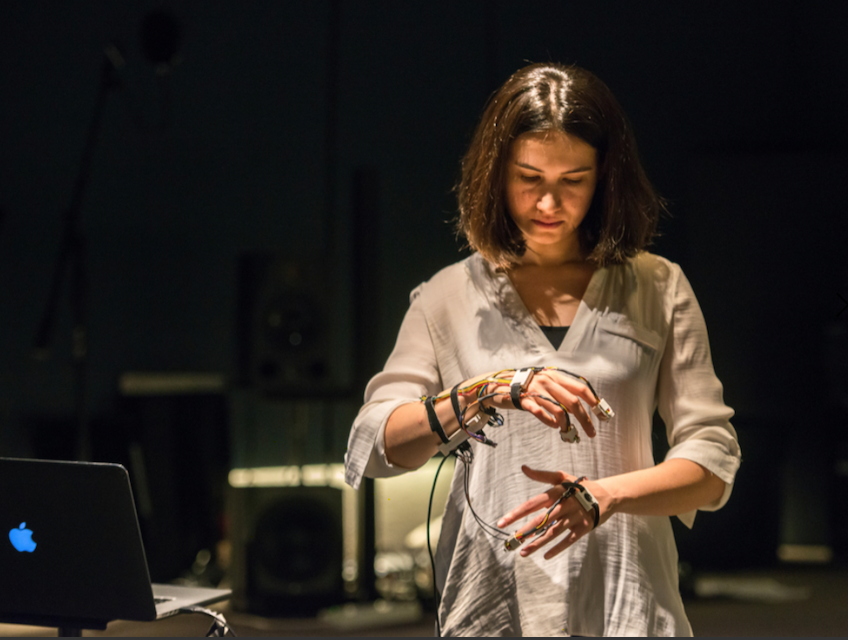At 6 PM, the gates (of what?) opened, and our diligent Kinetech Arts Open Labbers came flooding in like covid cases rising in the USA.
Our icebreaker questions of the day:
We opened the lab with a presentation by Doğa Çavdır, award-winning performer and researcher who has spent much time designing new instruments. The idea is to turn the body into a musical instrument. By turning the body into a musical medium, it allows for interesting interactions that connect musical performance and the physical dance in a more intertwined way.
In that vein, she talked about one of her recent projects, Felt Sound. The goal was to share the musical experience that is not music from the popular hearing culture, and the outcome was a performance and an instrument that was rigged to a hand that would create low-frequency, high amplitude sounds -- effectively mapping ASL poetry and performances to audible sounds so that people could share in a musical experience whether or not they could hear. The instrument was equipped with sensors of all kinds -- accelerometers, magnet sensors, and more...

Similar to our previous foray into gestures on 07/22, this presentation talked about playing at the intersection physicality, meaning, and gesture. How would someone feel about their own ASL poetry when playing that instrument?


The physicality of meaning and language is a fascinating intersection. One of the Open Labbers pointed out that sometimes different cultures have different ways of physically feeling concepts. For example, we think of the “past” as being “behind” us, but the South American Aymara indigenous people think of the past as in front of them, since they can see everything in front of them just like they know what has already happened in the past.
If you’re interested in more of Doga’s other works, check out her website here.
The Experiment: Jamboard Deepdreaming
In the next segment of Open Lab, we returned once more to the Jamboard. But we’ve realized that to create something even more interesting than a chaotic free-for-all, we needed more restrictions. Thus, Wei came up with the Jamboard Deepdreaming concept.
Deepdreaming is an AI system that takes in information and then it makes -- it’s effectively an AI-generated hallucination. We humans can hallucinate collaboratively. How can we shift a collective drawing or image into one?
Wei proposed that the only thing allowed on the Jam Board is a dot. Everyone would be able to place dots during specific 2-minute periods. The objective was just to draw numbers with dots.
Here are the results for 2 minutes of free-for-all point placing where the goal is to create numbers with points.
This is the Jamboard result when everyone is only allowed to place one dot every 5 seconds -- a much sparser canvas but still some recognizable numbers (before Anonymous Axolotl erased some stuff).
Then we all decided to try it with letters and see what kind of words we could come up with. This was the Jamboard result from everyone placing one letter every 10 seconds.
As you can see, we managed to fill the Jamboard with beautifully realized collective messages, such as “giraffe,” “earthquake,” “farts,” and “i c butts.”
Excuse the hourglass. That was again Anonymous Axolotl, you mischievous eraser and deliberate jamboard rulebreaker!
There’s something to be said about projects like these -- with restrictions that allow something interesting to be created and a collective experience to be had. There’s a level of trust and hope that you must have in your Jamboard-mates to see if they’ll realize what you are trying to say -- and if they’ll help you continue it or thwart it. What a metaphor for life!
If you care to join us in Pointillist daydreaming, feel free to join our meetup group here and pop on by between 6-7:15 PM Pacific time!
Further reading:
http://mcd.stanford.edu/publish/files/2020-nime-feltsound.pdf
http://www.cogsci.ucsd.edu/~nunez/web/FINALpblshd.pdf
https://www.sciencedaily.com/releases/2006/06/060613185239.htm

